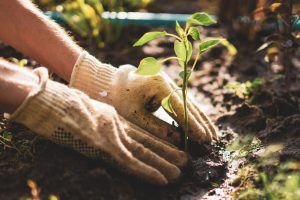Secrets for a Successful Spring Garden in Texas
 When gardening fever hits in late winter, there are few of us Texans who are not at least a little inspired to go out and grow something. What begins as an inspiration to grow a garden of flowers or vegetables can end as a lifelong hobby and years of enjoyment. However, it can also end up in disappointment by the time the first of summer rolls around. Some who fail at first may decide they just cannot grow things and must have a brown thumb when nothing is further from the truth.
When gardening fever hits in late winter, there are few of us Texans who are not at least a little inspired to go out and grow something. What begins as an inspiration to grow a garden of flowers or vegetables can end as a lifelong hobby and years of enjoyment. However, it can also end up in disappointment by the time the first of summer rolls around. Some who fail at first may decide they just cannot grow things and must have a brown thumb when nothing is further from the truth.
The difference between good gardeners and bad ones usually boils down to an understanding of some horticultural basics and a commitment to learn and then put what you learn into practice. What follows are some tips to guide you past some common pitfalls gardeners face.
Prepare The Soil First
Soil is the foundation of a garden. Most of us start with something too sandy, too clayey, or too poor. And unless you have been working on it, your soil is probably low in organic matter. Before one seed or transplant goes in, build up your soil with a few inches of compost and whatever nutrients may be lacking. A soil test is a good start to let you know where you are, what you need to add, and how much.
Start building your soil with compost and at least a start of nutrients. Even if you have to water those plants for a few days while you get the ground ready, you will be glad you waited to plant until the soil was properly prepared.
Ensure Good Drainage
Here in Texas it seems to be feast or famine when it comes to rainfall. When it is dry we can water, but what do we do when it will not quit raining? Plant roots need oxygen and hate to sit in waterlogged soil. Plus, when it is wet you cannot get into the garden to plant or work the soil.
You can always add water but you can’t take it away. Consider building raised beds in fall or early winter when the soil is not too wet. Then, when late winter and spring rains arrived, your beds will already be prepared for planting. Raised beds also warm up faster in early spring for a little head start on the season.
Provide Lots of Sunlight
Select a good site for planting. Most vegetables prefer a full sun exposure. Many of us in older neighborhoods have wonderful large trees that make a sunny location rare. However, if you want a productive garden, direct sunlight is a must. Crops that are grown for their fruit (tomatoes, peppers, eggplant, melons) or roots (carrots, turnips, radishes) must have at least six hours of sunlight. Bright shade or dappled shade just will not do. Crops that are grown for leaves (lettuce, collards, spinach, chard) will tolerate a bit of shade.
Plant At The Proper Time
Plant vegetables at the proper time. There is a small window of time in spring between freezing weather and blazing hot weather here in Texas. If you wait too long to set out tomato plants, your yields will be low at best. If you plant cold-tender veggies too early with no protection, a late frost may spoil the show.
Resist Overplanting
Zucchini seeds should be sold only four to a packet (with the assumption that two of them will be killed somewhere between planting and maturity). If there are two of you in the house, do not plant a 50-foot row of okra. It is okay to fold the top of a seed packet over and seal it in a jar in the refrigerator for later planting. You do not have to plant all the seeds in the packet. Something inside of us makes us want to plant a big garden.
Unless you are an experienced gardener and have a soup kitchen to support, it is best to start small. You can grow a lot of stuff in a small garden, if you take care of it. If you have never gardened before, I would suggest one or two 4 by 8 foot or 4 by 16 foot beds. Another good idea is to make sure the garden is close to the water faucet and close to the house. If you have to see it every day, you are more likely to venture out and keep things in order. With time and experience, that garden plot can grow to whatever size you like.
Provide Plenty of Nutrients
Healthy plants grow fast, produce well and in many cases are less bothered by a few pests here and there. By the time you notice a nutrient deficiency, it is most likely too late to do much for that particular crop. It is better to start with a soil test, build soil each season and fertilize plants lightly but regularly to keep them growing strong.
A few weeks after transplanting, hit them with a light dose of fertilizer to keep them going. Try a natural 8-2-4 or 6-2-4 blend and sometimes some cottonseed meal or blood meal. Some veggies respond well to foliar feeding with a fish emulsion and seaweed solution for an added boost. Legumes (beans and peas) produce their own nitrogen on the roots and in moderately fertile soil should not need additional fertilizer. But they do need soil with good nutrient levels of all the other elements.




